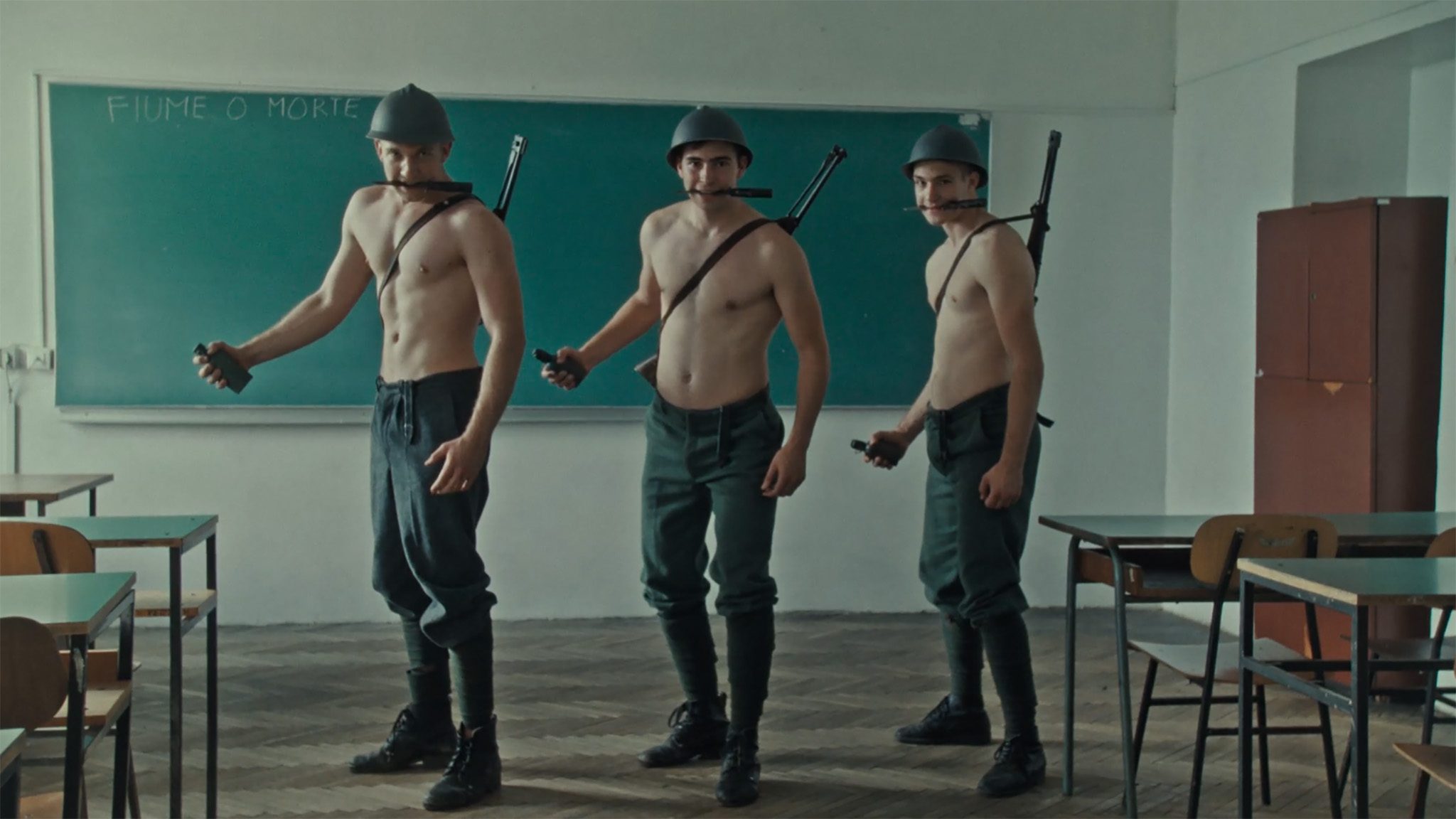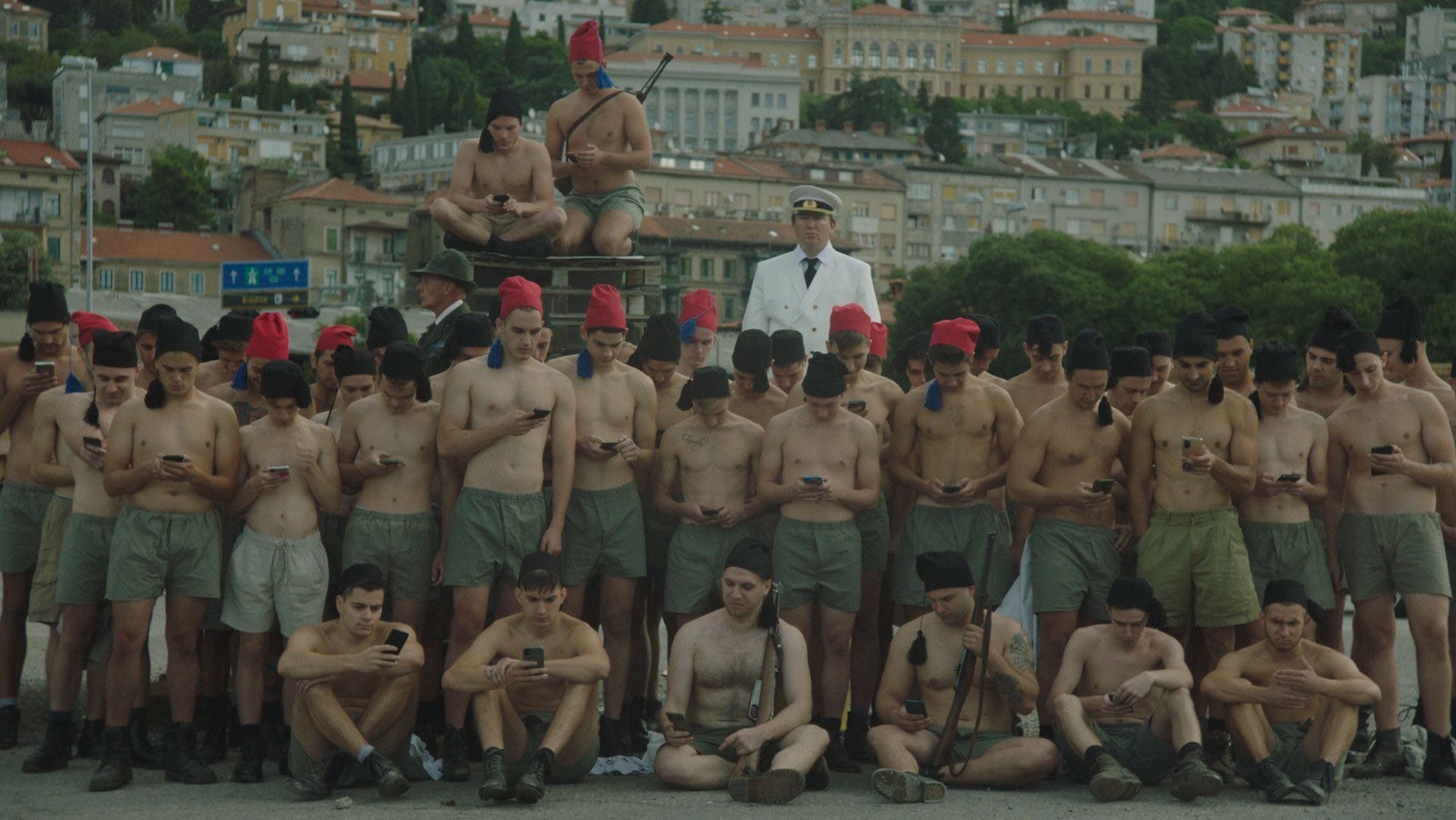Croatia’s Oscar Contender ‘Fiume o morte!’ Dives Into History for a Timely Study of Populist Autocracy

Writer and director Igor Bezinović (A Brief Excursion) grew up in Rijeka, Croatia. Formerly known as Fiume, which is still its Italian name, the city was the site of an experiment at a time of nascent fascism that many non-locals may not be aware of. But amid the rise of right-wing politicians around the globe and the controversy earlier this year surrounding a “gesture” by Elon Musk, Bezinović’s hybrid film Fiume o morte!, Croatia’s submission for the best international feature Oscar, seems very timely.
A mix of re-enactments and reconstructions with the help of Rijeka’s citizens, historical photos and footage, and documentary elements, it world premiered at the International Film Festival Rotterdam (IFFR), where it won the Tiger Award for best competition film before touring the fest circuit. More recently, the movie, whose title translates as Rijeka or Death!, won the best film, best director and best screenplay honors at the inaugural Adriatic Film & TV Awards. And from Monday, it will screen as part of the 29th edition of the Tallinn Black Nights Film Festival (PÖFF).
So, what is it about? Let’s get into a bit of history. Following World War I and the disintegration of the Austro-Hungarian Empire, Italy and the Kingdom of Serbs, Croats, and Slovenes, which later became Yugoslavia, both laid claim to the city of Fiume. The Paris Peace Conference proposed handing the city to the latter, but negotiations were interrupted when on Sept. 12, 1919, a force of Italian nationalists ended up occupying it – for a whole 16 months. Its leader: Italian poet, aristocrat, and army officer Gabriele D’Annunzio.
Because the Italian government did not want to go against international obligations by annexing Fiume, D’Annunzio established what he dubbed the “Italian Regency of Carnaro.”
But don’t expect a conventional history lesson from the movie, which explores the past and how it informs the present, also allowing the audience to reflect on the ultranationalist ideologies today. Says one interviewee featured in the film: “They’re still around today, unfortunately. We just don’t know who they are.”
D’Annunzio also used what was back then called “the Roman salute,” and later became the Nazi salute, as part of his theatrics, laying the groundwork for Benito Mussolini’s political mannerisms – and the debate about Musk’s gesture.
Bezinović previously told THR that D’Annunzio was “a weird dictator,” comparing him to the Joker in Batman. “He’s this kind of villain who you know is super intelligent and he’s super funny and witty, but at the same time you’re really afraid of him.”
To get a first tease of Fiume o morte!, check out a trailer here.

When it comes to the reenactments, was there any scene that was particularly challenging or memorable?
The reconstruction scene that I knew I wanted to have from the very beginning is this scene in which 70 soldiers are jumping off of a bridge, some of them into the sea, and some of them onto the pavement below the arcs of the bridge. I knew instantly when I saw this in the archive material. Why did they make this video? It was so clear. It was made for propaganda purposes. It was made to represent that the occupation is cool. If you come here to occupy, you’ll have so much fun.
This scene was extremely complicated to shoot. We had a scuba diver in the canal. We had fire teams who had inflatable cushions in case anyone fell off the bridge. We had a stunt coordinator, so it was a scene that was very risky to shoot. Luckily, we had only one sprained ankle as a result, and nobody got seriously hurt. But I knew that we had to recreate this moment of seduction that D’Annunzio had with his soldiers. This was the most expensive and most complicated scene in the film.
Fiume o morte! tells the story of a specific time in history in a specific place, but a lot of what we see and hear feels really timely. Have you gotten much feedback from audiences about parallels they see to their countries and our present day?
Every culture relates it to its own dictators. Unfortunately, many countries have had or still have authoritarian leaders, and nationalism is widespread around the globe. It really rings a bell for anybody who is following contemporary politics or knows something about history. I think one of the advantages of this film is that it’s, in a way, contemporary, although not in a deliberate way. I couldn’t plan the state of the world, with the militarization of the whole world, when I started the project.
Do you have any examples of news that viewers may relate to key themes of the film?
In January, just 10 days before our premiere, Elon Musk did the Roman salute at the inauguration of Trump. I see the timely aspect of the film as definitely related to leaders who are presenting themselves as democratic, but actually aren’t.

What feedback have you received or do you expect from the U.S.?
For the audience in America, I think it’s obvious that they make parallels between D’Annunzio and Trump. People in the audience are aware, and I would say that this story is very much related to the States.
You mentioned all the research you did. How long did it take from the first idea to actually completing the film?
10 years. In 2015, we got our first script development money, and we got funds from three countries, Croatia, Slovenia, and Italy. It took us quite a while, especially to get the Italians on board, since in Italy, this is such a controversial topic. The film presents D’Annunzio in a way that he isn’t usually presented in Italian schools. There, he is presented only as a big poet.
The production, the filming, took place in 2021 and 2022, and we were editing it for two years. So, yeah, it was a very, very long process because there are so many scenes, so many characters, so many aspects.
Do you have any plans for your next film?
With all the travels, it’s been so intense. On my cell phone, I’m writing down ideas and feel I could do 10 more films. And at the same, I’m so happy about the distribution of this film and so satisfied and relaxed.
I wonder if your hometown will get more visitors who saw Fiume o morte!…
Many people see the film and tell me: “This is a cool town. We want to visit it.” I’m happy that I put it on the map. Hopefully it doesn’t get too touristy, but I don’t think it ever will, because it’s still very industrial.
We have a bunch of requests from schools all over the world that want to show the film, from filmmaking schools, history departments and linguistic departments, art history and literature departments. On this educational level, we have a lot of interest.

Is there anything else you’d like to highlight or share?
A curious thing that people notice is a scene in the introductory part of the film in which I’m representing the chronology of the city from 1897 until 1915 by using the years, which are engraved on the bottom part of doors. Some people ask me if this is real? This scene is so representative of the whole method behind this film and the detailed and meticulous way we made it. We were actually walking around the city, opening all the doors, until we found all the years we needed. This effort and love for the city itself is reflected in this research.
In field research, we were discovering things on the facades of our city, encountering people who live there now, gaining trust from the people to tell the story with us. We were also rediscovering the Fiuman dialect in which the film is narrated, which is slowly disappearing. So these are all these little local aspects.
Tell me more about the Fiuman dialect!
It is a subdialect of the Venetian dialect. It’s very similar to the Trieste dialect. Our film in June got an award from the Association of Italian Fiume People in the World. It’s an association of the people who left Rijeka/Fiume after the Second World War. It means so much both to them and to the Italians who still live in Rijeka that it’s narrated in their dialect, that their mothers and fathers or grandmothers and grandfathers spoke, and which every day has fewer and fewer speakers.
HiCelebNews online magazine publishes interesting content every day in the movies section of the entertainment category. Follow us to read the latest news.





